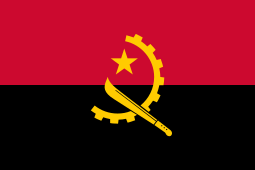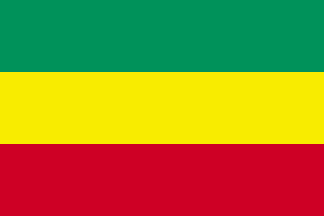Top 10 Countries With Highest Fertility Rates 2023

The average number of children born to women during their reproductive years is known as the fertility rate, and it varies widely from country to country. While low birth rates are causing a population decline in some nations, high fertility rates are continuing in others, resulting in a rapid increase. We will investigate the social, economic, and cultural factors that contribute to the high birth rates of the countries with the highest fertility rates in this article.
In addition, we will investigate the potential challenges and opportunities presented by a high fertility rate, not only for the nations themselves but also for the community at large. We’ve also published article on countries with best health care
Top 10 Countries with Highest Fertility Rates
- Niger
- Somalia
- Chad
- Congo
- Mali
- Angola
- Nigeria
- Cameroon
- Sudan
- Ethiopia
1. Niger

The West African nation of Niger is home to more than 24 million people. With an average of 7.2 children per woman, it has the highest fertility rate in the world, according to the World Bank. This high fertility rate is attributed to a variety of factors, including a lack of access to family planning services, high infant mortality rates, and cultural attitudes that encourage large families.
Poverty, a lack of access to healthcare and education, food insecurity, and other issues plague the nation. The government and international organizations are attempting to reduce the high fertility rate, improve mother and child health, and encourage family planning in spite of these obstacles.
2. Somalia

With a population of more than 15 million people and one of the highest fertility rates in the world, Somalia is located in the Horn of Africa. In Somalia, women give birth to an average of 6.2 children.
READ ALSO » Top 10 Countries With The Highest Diabetes Rate 2024
Numerous factors, including a lack of family planning services, cultural norms that place a high value on large families, and a lack of educational and economic opportunities for women, contribute to the high fertility rate. Since Somalia's population is expected to double in the next few decades, the country's ability to meet its people's needs may be hindered by such high fertility rates, which have important consequences.
3. Chad

Chad is a country in Central Africa that does not have sea access and has more than 16 million people. Women in the country have an average of 6.4 children and one of the highest fertility rates in the world.
Cultural norms that encourage large families, early marriage, and low contraceptive use can all contribute to this. Chad also has to deal with poverty, a lack of healthcare and education, high infant and maternal mortality rates, and other issues. Chad's population is expected to grow rapidly in the coming years despite efforts to implement family planning and lower fertility rates. This will put even more pressure on already limited resources.
4. Congo

The country of Congo in Central Africa is home to more than one hundred million people. It has one of the highest fertility rates in the world, with an average of 5.8 children per woman. There are a number of factors that contribute to the high fertility rate, such as low levels of education, limited access to family planning services, and cultural attitudes that encourage having large children.
The country faces a number of challenges as a result of its high fertility rate, including high rates of maternal and infant mortality, food insecurity, and a lack of funding for education and healthcare. To address these issues, it is necessary to collaborate with the government, civic society, and foreign partners to advance reproductive health and expand access to healthcare and education. You can also read on countries with best doctors
5. Mali

Mali, which is in West Africa, is known for having one of the highest rates of fertility in the world. In 2020, the World Bank estimated that Mali's overall fertility rate would be 5.92 children per woman, significantly higher than the global average of 2.4 children per woman.
Cultural beliefs that encourage large families, early marriage, and a lack of access to birth control are some of the factors contributing to Mali's high fertility rates. Mali's population has grown rapidly as a result of its high fertility rate, putting additional strain on the country's social services and resources.
6. Angola

READ ALSO » Top 10 Countries With The Highest Rate Of Obesity
More than 31 million people live in Angola, a country in southwest Africa. With an average of 5.6 children per woman, the nation is well-known for having one of the highest fertility rates in the world.
Insufficient access to family planning, cultural norms that place a high value on large families, and a lack of educational and economic opportunities for women are the primary contributors to this high fertility rate.
Angola's economy, healthcare system, and population growth are all affected by this high fertility rate. As a response, Angola is currently working to improve the situation by promoting female education and expanding access to family planning services.
7. Nigeria

Nigeria, a country in West Africa, has one of the highest rates of fertility in the world. Nigeria has a fertility rate of 5.3 children per woman, which is significantly higher than the global average of 2.4 children per woman, according to the World Bank.
A number of factors contribute to Nigeria's high fertility rate, such as cultural norms, early marriage, and a lack of access to family planning options. The rapid population growth in Nigeria has a significant impact on the economy, healthcare system, and social services. As a result, a number of initiatives to promote family planning and lower the fertility rate have been launched by the Nigerian government. In spite of these efforts, not a lot has been accomplished up to this point.
8.Cameron

Officially known as the Republic of Cameroon, Cameron is in Central Africa. According to the World Bank, the country has one of the highest fertility rates, with an average of 4.5 children born to each woman.
This high fruitfulness rate can be represented by a scope of elements, including deficient admittance to contraception, low instructive fulfillment levels, and social qualities that advance having huge families.
Cameroon's fertility rate has remained relatively high compared to other nations despite efforts to promote family planning and reproductive health. As a result, the country's high fertility rate has significant effects on the country's social and economic development as well as the expansion of its population.
READ ALSO » Top 10 Countries With Highest Rate Of Child Marriages
which is in North Africa, has one of the highest fertility rates in the world. Overtaking the global average, Sudan's estimated total fertility rate for women is approximately 4.4 children.
Limited access to family planning services, inadequate education, and cultural and religious values that encourage larger families are just a few of the many factors contributing to this high fertility rate. A high fertility rate can have a significant impact on Sudan's economic development because it can increase reliance on resources and dependency ratios. To reduce Sudan's fertility rate, programs aimed at improving education and family planning services must be implemented.
10. Ethiopia

Ethiopia, which is in the Horn of Africa and has a population of more than 110 million people, has one of the highest fertility rates in the world, with an average of 4.3 children born to each woman. The high fertility rate is caused by a number of things, including a lack of women's education, the tendency of society to have large families, and restricted access to contraception.
The country's infrastructure and resources have been put under strain as a result of this demographic phenomenon's rapid population growth. Nonetheless, the Ethiopian government is addressing the problem by promoting women's education and expanding family planning services.
Conclusion
Sub-Saharan Africa has the highest fertility rates, exceeding the global average in several countries. A nation's economic and social development can be significantly impacted by high fertility rates, which can put a strain on resources and healthcare systems. Understanding the causes of these high rates and working toward long-term solutions to population growth are essential.
